Chania
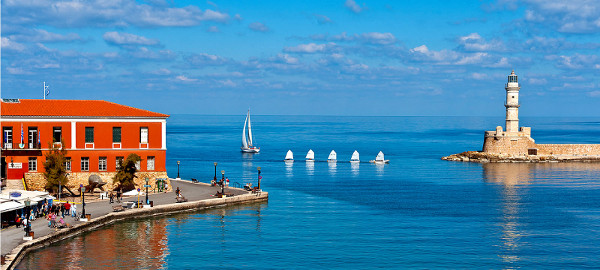
Chania town, is only 2½ Km from Lefka apartments and it can be easily reached either by public transportation, the bus stop is located just outside Lefka, or by taxi. You may even consider walking; in half an hour you will be wondering around the amazing old Venetian harbor of Chania.
Chania (also pronounced as Hania or Khania) is a beautiful and picturesque city in Crete with reminders of the past at every corner. Chania is the main town in the west of Crete, with the second largest population after Heraklion.
Crete, the largest of the Greek islands, defines the southernmost boundary of Europe and is located at a point where three continents converge. Its unique geographical position is responsible for Crete being able to boast an incredible variety of flora, many of which are endemic with Asiatic and African relationships.
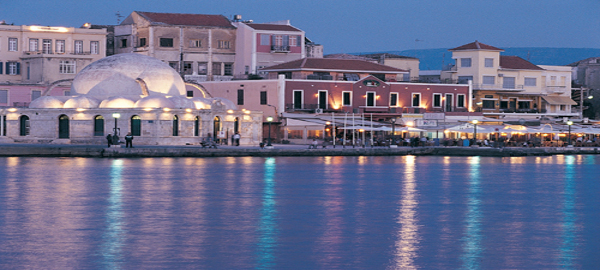
Chania is divided into two parts - the New Town which is where the day to day business of the Chania goes on, with its shops and offices, the post office and banks, the renowned indoor market and the bus station - and the Old Town, built around the Venetian harbor with numerous picturesque narrow streets and architecture showing the influence of decades of foreign domination.
 This is a short brochure about Chania for download in pdf format. It
includes an area and town map and also descriptive information
about monuments, attractions and beaches. Also, https://www.chaniatourism.gr, Chania Tourism Bureau, has a lot of useful information about Chania.
This is a short brochure about Chania for download in pdf format. It
includes an area and town map and also descriptive information
about monuments, attractions and beaches. Also, https://www.chaniatourism.gr, Chania Tourism Bureau, has a lot of useful information about Chania.
The city enjoys a typical Mediterranean climate, with sunny dry summers and mild rainy winters. During the period between April and October, clear-sky weather is almost an everyday feature. The atmosphere is always warm, but fierce heat waves (temperatures above 38°C) are not very common. Intervals of sunny days are frequent during the windy and rainy winter as well. Snow and frost are very rare and usually such cold days are followed by much warmer and sunny weather.
History
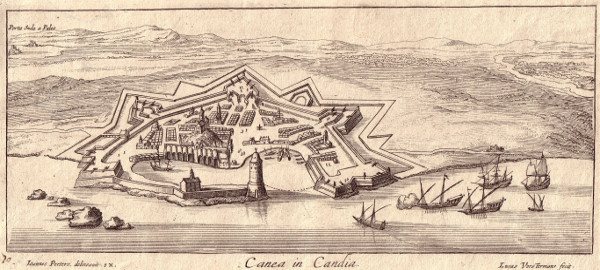
Rich in history, spectacular vistas and sunny days, Crete has long been renowned for its agreeable Mediterranean climate that has always been attractive to humankind and allowed the ancient Minoan civilization to flourish over four thousand years ago.
Chania is believed to be one of the oldest continuously inhabited settlements, initially known as Kydonia, with some evidence remaining from Minoan times, a mention in the Odyssey, and a flourishing community in Classical times. After fierce fighting it was occupied by the Romans and became an important town right through early Christian and Byzantine times, each era leaving it's mark.
The Venetians, after a brief spat with the Genovese, renamed the town La Canea and had the most lasting and appealing influence on its architecture. After another monumental struggle the town fell to the Turks who made it the seat of their pasha and they in turn left their mark by converting churches to mosques, with an imposing dome still adorning the harbour front.
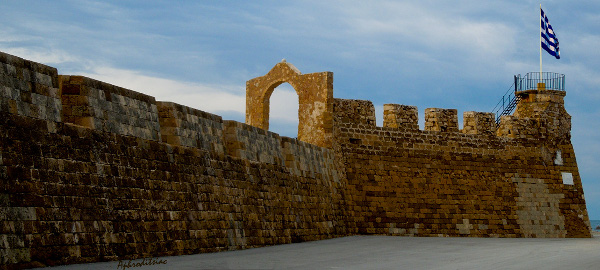
Recent excavations have established that the ancient city of Kydonia was located here also. The city dates back to the Neolithic period and recent archaeological digs on the acropolis of Kasteli have uncovered remains of a significant Minoan community. Known as Kydonia in the past it was one of the most important cities of Crete right up to the Arabian seizure in 824 AD. The Venetians purchased Crete in about 1204 but lost it to the Genovese between 1267 and 1290.
The city of Chania was rebuilt on the site of the Byzantine acropolis in 1252 and after improving the fortifications at Kastelli the Venetians built their own cathedral plus many palaces and houses in the surrounding area for their people. In 1645, after a two month siege with terrible losses, the Turks overwhelmed the whole island. Chania became the Turkish island capital. Its churches were converted to mosques.
The Turks were expelled in 1898 when Prince George became the High Commissioner of Crete, though the actions of the Great Powers of Britain, France and Russia. His regency was brief as Crete soon, finally, became part of the Greek state. In World War Two Chania suffered severe bombardment. Nearly everything was obliterated apart from the area around the harbour.
Chania, a special place for a holiday
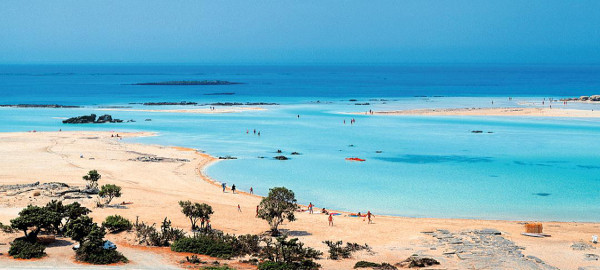
Over the past few decades Chania's architectural attractions and sense of history, in juxtaposition with its backdrop of the powerful Lefka Ori (White Mountains) has encouraged many chance visitors to linger a while longer and consequently the city has a large cosmopolitan and artistic community. The Venetian harbour and the higgledy-piggledy streets behind, with their combination of tastefully restored and tumble-down buildings are natural magnets to all Chania's visitors, as are the famous covered market and the 'street of the leatherworkers'.
Today Chania is primarily a living and breathing working city and a commercial center for the local agricultural communities, with tourism coming a close second. The shops range from simple old-style Greek emporiums to smart international designer shops and from tacky tourist kiosks to stylish art galleries. The new area of the city, about twenty minutes walk west of the old harbour, has a surprisingly well kept beach, fringed by some good fish restaurants but most sun-seekers choose to head west by bus or hire car where there are literally miles of sandy beaches, or up onto the Akrotiri peninsula where there are a number of quieter sandy coves and beaches.
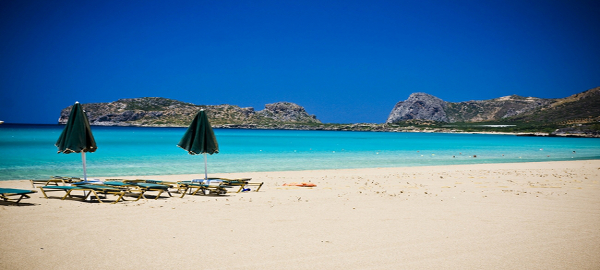
In the early evening visitors from the surrounding beach resorts head for the old harbour, where the waterfront tavernas compete noisily for their business. Beyond the mosque, heading towards the old Venetian arsenals, lie some quieter tavernas and further beyond these in the inner harbor are some simple fish tavernas, much favored by the locals and consequently never busy until late at night.
In recent years a number of restaurants have sprung up in some of the un-restored buildings providing the unique experience of dining by candlelight in evocative surroundings, perhaps to the strains of the lyre, whilst watching the night skies. After dinner some head home replete, whilst others stroll the cobbled back-streets or sip a brandy in a rooftop bar. The young and energetic can choose a frenetic music bar or club whilst the not so young, but nonetheless energetic, can choose a mellow jazz bar or Cretan cafe with impromptu traditional music and dancing.
The Venetian harbor
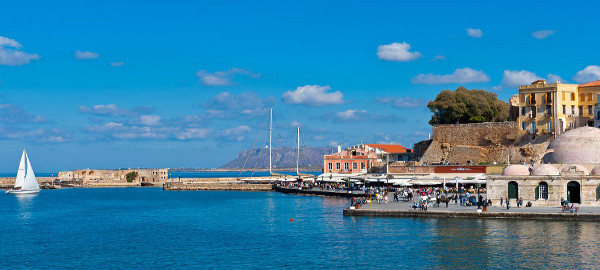
With its diversity and energy Chania can be whatever the visitor wants it to be - and few are ever disappointed. Chania will enchant almost everyone and richly rewards exploration with its web of side-streets, crumbling masonry and magnificent harbor. Follow the sea wall round as far as the minaret style lighthouse for an excellent view of the city. Visit the Venetian arsenals, 16th Century arched buildings designed for shipbuilding and repairs are on to the quietest part of the harbor where you'll find the moored fishing boats and therefore the tavernas with the best fish! Of the 17 shipyards, 7 are still standing and have been adapted for contemporary use. Take a look at the Mosque of the Janisseries, a curious dome shaped building at the end of the inner harbour.
Perhaps the most commercially touristic street in Chania is the Chalidon Street, which leads down to the harbour front. In a square on the right you will find Chania´s cathedral church of the Three Martyrs. A little further down the road a Turkish hamam survives. Across from the cathedral is the catholic church in whose courtyard is the entrance to the Cretan Folk Museum. Right next door is the renovated church of St Francis, the most impressive Venetian church on Crete, consisting of a temple and two closed courtyards, and probably dates back to the 14C. Nowadays it houses Chania´s archaeological museum, well worth a visit to see the ceramics, inscribed tablets, glassware and mosaics recovered from local excavation work.
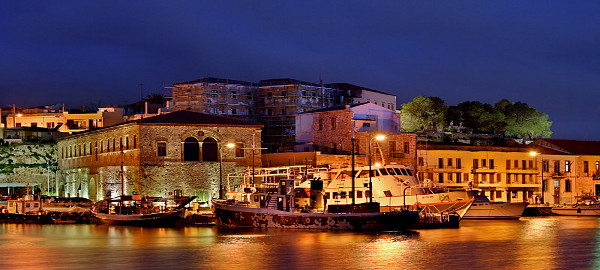
Just off the top of Halidon street, you can walk around Stivanadika (Leather street). This road is popular for its huge array of leather goods and articles of Cretan folk art.
At the far end of the harbor is the Firkas fort which today houses the Naval Museum. The Firkas was a fortress residence and barracks in the times of Venetian occupation and later when the Turks invaded barracks and prison. On 1st December 1913 the Greek flag was raised there in celebration of the reunification of Crete with Greece.
Near Firkas you can visit Theotokopoulou Street, an attractive street leading down to the harbour where you ´ll find Venetian mansions with strong oriental configurations from the times of Turkish occupation in addition to Neo-classical buildings. Zambeliou Street is a picturesque narrow street hosting examples of superb Venetian architecture. It twists and climbs parallel to the harbour with tiny lanes and steps taking you off into the past.
The Municipal Market
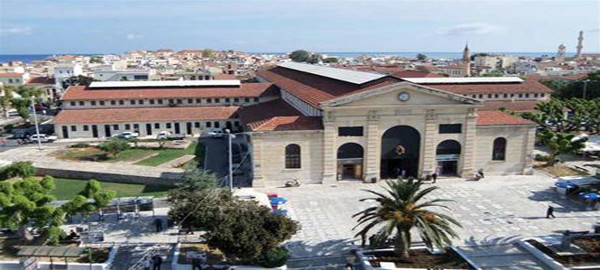
Don't forget to visit the municipal market, an imposing and rather fine cross shaped building with doors on all four sides. It houses butchers and fishmongers, fruit and vegetable sellers and purveyors of a multitude of herbs and spices, as well as general wares. It is considered one of the finest indoor markets in Europe.
The Municipal Market was built in 1913, on the site of the Venetian platform bastion, to celebrate the unification of Crete with the rest of Greece. At the time Chania was the commercial and governmental capital of Crete (Kriti) and the market signified her trading power. A large section of the Venetian walls had to be demolished in order to modernise and develop the city. Measures for the protection of the Byzantine and Venetian fortifications were not implemented until much later, in the 1960s.
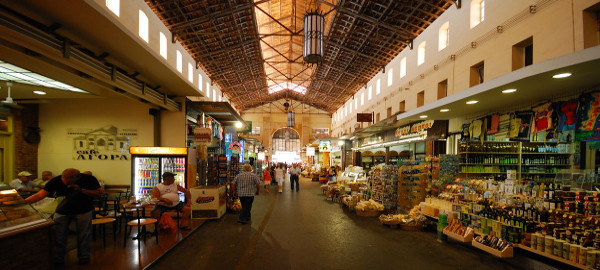
The Municipal Market was opened by Eleftherios Venizelos in 1913. It is in the shape of a cross and has four doors, one to each arm, which are shut to secure the shops housed here. The market has 76 shops, including butchers' shops, fishmongers', general stores, a chemist's, etc. It is an architectural jewel of Chania and one of the most impressive covered markets in the Balkans.
Close to the market, in 1866 Square you´ll find taxi ranks, also buses for short journeys west of Chania and to Lefka apartments, ideal for the best local beaches. A few minutes walk north along Kydonias street and you´ll come across the KTEL (long distance) bus station. Buses leave promptly for destinations all over Chania area and Crete. The surrounding streets have an old fashioned commercialism and are full of general stores.
